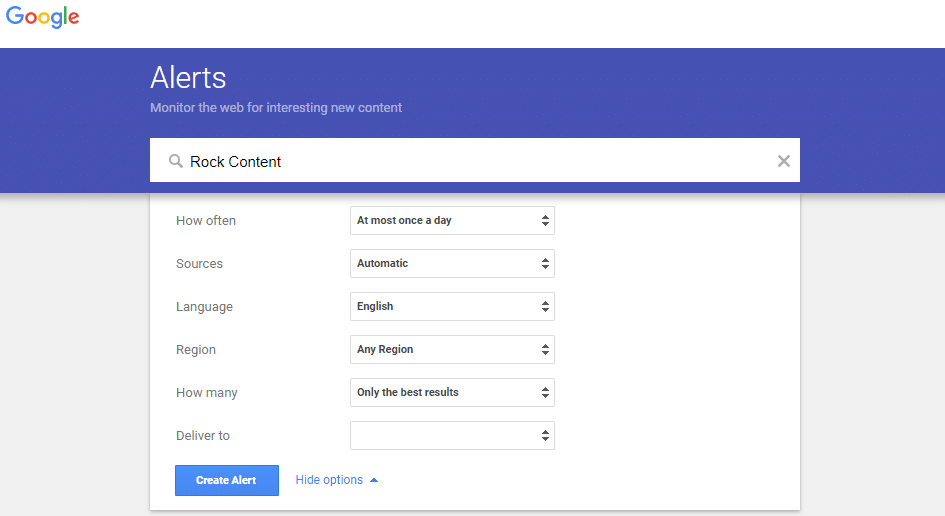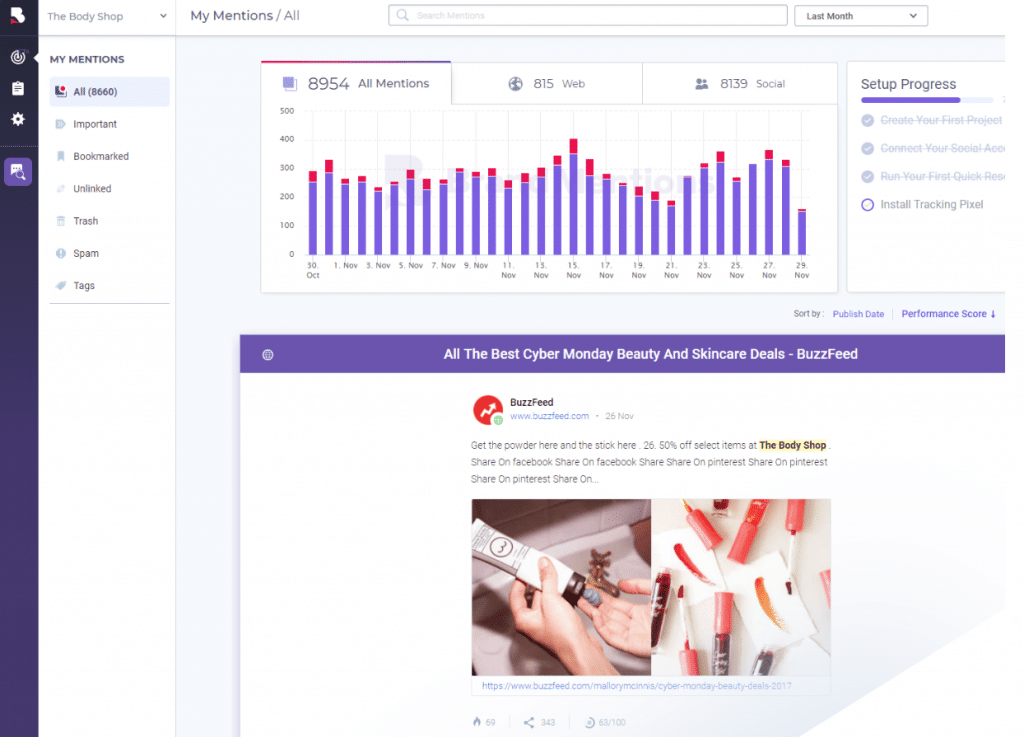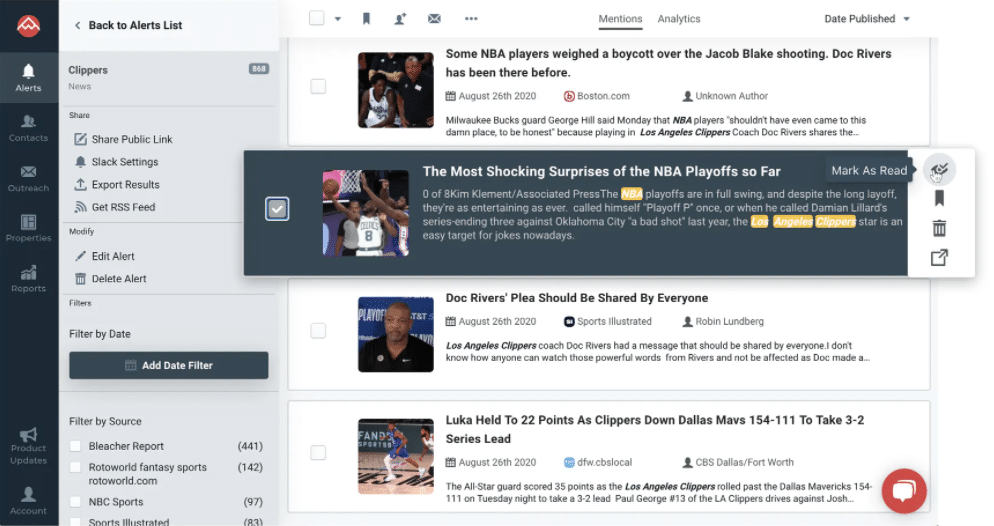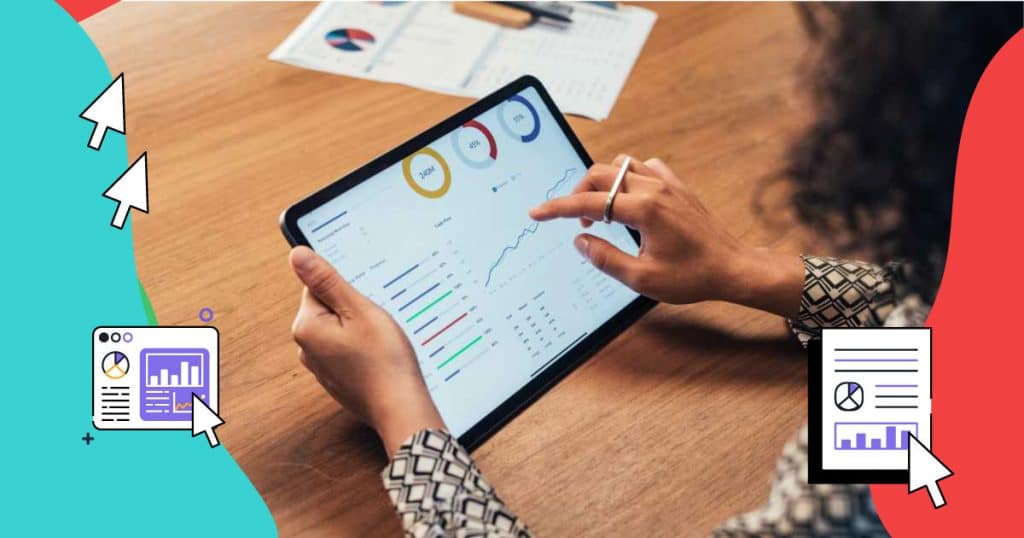If you want to build a strong business, you need to ensure that your brand reputation is positive and resilient.
Brand monitoring allows you to pay attention to how and when people discuss your company.
From there, you can figure out what you’re doing right and wrong and adjust accordingly.
Because brand monitoring is so valuable, it’s crucial to understand how it works and how you can utilize it to further your own bottom line.
Here is everything you need to know.
- What is Brand Monitoring?
- Why Does Brand Monitoring Matter?
- When Does Brand Monitoring Matter?
- How to Effectively Monitor Your Brand
- What About Monitoring the Competition?
- Which Brand Monitoring Tools Should You Consider?
- Wrap Up: Getting Better at Brand Monitoring
What is Brand Monitoring?
As more people become familiar with your business, they’ll talk about it on various channels.
In branding, brand monitoring is the process of investigating these channels to see when and where your brand is mentioned.
Examples of media can include:
- Social Media Platforms (Twitter, Facebook, etc.)
- Search Engines
- Online Review Sites (Yelp, Google Reviews, etc.)
- News Sites
Usually, you can search for your company name and discover mentions and references immediately.
However, you may have to do some further digging on some channels, such as news websites.
Why Does Brand Monitoring Matter?
Brand monitoring is essential because it gives you valuable insight into how customers feel about your company.
Knowing what people are saying about your brand comes in handy for a few reasons, including:
Customer Satisfaction
Are your customers happy with your products and/or services? If not, what complaints pop up the most?
If you notice people remarking about the same problems repeatedly, you can address them to avoid bad reviews in the future.
Brand Loyalty
These days, consumers are more willing to stay loyal to a particular brand if they feel connected to it.
Brand monitoring can help you discover new fans and turn them into ambassadors.
Damage Control
If there’s a crisis related to your brand, you want to get ahead of it as quickly as possible.
Brand monitoring allows you to notice any potential issues brewing and resolve them before they spin out of control.
When Does Brand Monitoring Matter?
Overall, you should be monitoring your brand at all times.
Ideally, you can set a schedule to check mentions of your brand on various websites, blogs, and social media platforms.
Scanning these channels regularly ensures that you’re never surprised or caught off guard.
That said, some critical moments for brand monitoring can include:
New Product Launch
How are customers talking about your new product or service? Any issues that you weren’t aware of before the launch?
New Market Expansion
When moving into a new market, you can see how well your brand is received in real-time.
Press Releases or Announcements
Big company news should attract buzz for your brand, and you can see how much of a ripple your business can cast.
How to Effectively Monitor Your Brand
Knowing the value of brand monitoring is only the first step. Next, you need to know how to do it effectively.
Here are some best practices for this process:
1. Use Automated Alerts
We’ll go over specific brand monitoring tools later on which can alert you whenever your brand is mentioned online.
Having automatic notifications makes it much easier to stay on top of the situation.
Being proactive is much better than reactive, so alerts ensure that you can anticipate any potential issues before they arise.
2. Develop a Brand Monitoring Strategy
Seeing how customers mention you is only valuable if you do something with that information.
When coming up with a strategy, be sure to have action lists for every opportunity.
For example, if you notice a customer complaint, you can have someone from the support or sales team reach out with a solution.
If someone gives a stirring review, you can thank them directly or ask to use the review in your marketing materials.
3. Don’t Respond to Everything
If your brand is still relatively new, it’s easy to engage with everyone who mentions your company.
However, as you grow, it will be impossible to respond to every instance. And, in some cases, it may be insensitive or unnecessary to say anything.
For example, some people may leave negative reviews just to get free stuff. You need to know when to hold ’em and know when to fold ’em, so to speak.
4. Look for Misspellings and Variations
When looking for mentions, keep in mind that people may not use your brand name correctly.
Misspellings happen all the time, or users may leave certain words out (i.e., The).
Checking for these variations ensures that you don’t miss anything.
What About Monitoring the Competition?
One of the most valuable elements of any marketing strategy is competition research.
If you don’t know what your competitors are doing, how can you tell where you stand in your customers’ minds?
Fortunately, you can utilize brand monitoring tools for similar businesses and brands.
Doing this can give you valuable insight into what they’re doing right and wrong and how you can outshine them.
Looking at the competition can be valuable for a couple of reasons, including:
Spotting Market Trends
No matter what, you have to be adaptive to stay ahead in your industry.
Consumer tastes can shift suddenly and dramatically, and you don’t want to be left holding the bag.
Looking at mentions for your competitors can help you understand whether new trends are emerging or if current trends are dying off.
Targeted Marketing Campaigns
Knowing what your competitors are doing wrong can help you develop a better marketing strategy.
While you don’t want to call out the competition directly, you can focus on your features and benefits that they don’t have.
Which Brand Monitoring Tools Should You Consider?
Thankfully, technology makes it easy to figure out what people are saying about your brand online. Otherwise, you would need a full-time staff to scour the far corners of the internet.
Here are our top three brand monitoring tools:
Google Alerts

Technically, this tool is not just for brand monitoring, but it works well for this purpose.
All you have to do is type your company name (and variations) into the search bar. The program sets up email alerts and notifies you whenever something new pops up.
Google Alerts is also helpful for market research and analysis.
You can get notified for specific keywords related to your business and quickly stay on top of trends.
The tool allows you to set up the frequency of your alerts, and you can refine your notifications to a specific region.
Google can also curate your list to provide only the top-ranked results. This way, you can avoid a potential barrage of mentions in your inbox.
BrandMentions

This tool is a one-stop-shop for everything you need to monitor your brand.
You can sign up for free and get a taste of what to expect. BrandMentions searches through all online channels so that you don’t have to.
Other products include:
Reputation Management
Instead of curating your own mentions, BrandMentions will do the work for you.
This tool shows you the number of positive and negative interactions in an easy-to-read graph. This way, you can see how well your brand is doing over time.
Competitor Spying
You can dig deeper into the competition and gain insight into how they’re promoting themselves.
Business Intelligence
You can get action lists related to your mentions.
For example, if users want you to open a store in a specific area, you can monitor engagement and see if it will be profitable to obey their wishes.
PeakMetrics

Technically, this isn’t a brand monitoring tool, but it’s hugely valuable if you want to understand your market and your customers better.
PeakMetrics uses Nielsen data to aggregate tons of information about consumer habits.
But don’t worry about drowning in statistics and graphs. PeakMetrics can curate this data for you into easy-to-read reports.
Best of all, you can use the tool to see how well your marketing is doing.
Once you start a new promotion, you can see how it impacts your customers and their buying patterns.
If your campaign is a hit, you can dive deeper to see why it resonated so well with your audience. If it fizzles out, you know to adjust your strategy next time.
Another benefit of tapping into Nielsen data is that you can monitor all channels, both online and offline.
For example, if you have any radio, TV, or magazine ads, you can get data about those too.
Wrap Up: Getting Better at Brand Monitoring
Developing and implementing this type of strategy can be challenging if you’re new to the process.
But believe us: it’s worth it.
With brand monitoring, you can be several steps ahead of your competition, delivering the best experiences to your audience.
And with you want to keep improving, here’s our tip: build your own Content Style guide and truly explore the power of your communication!








